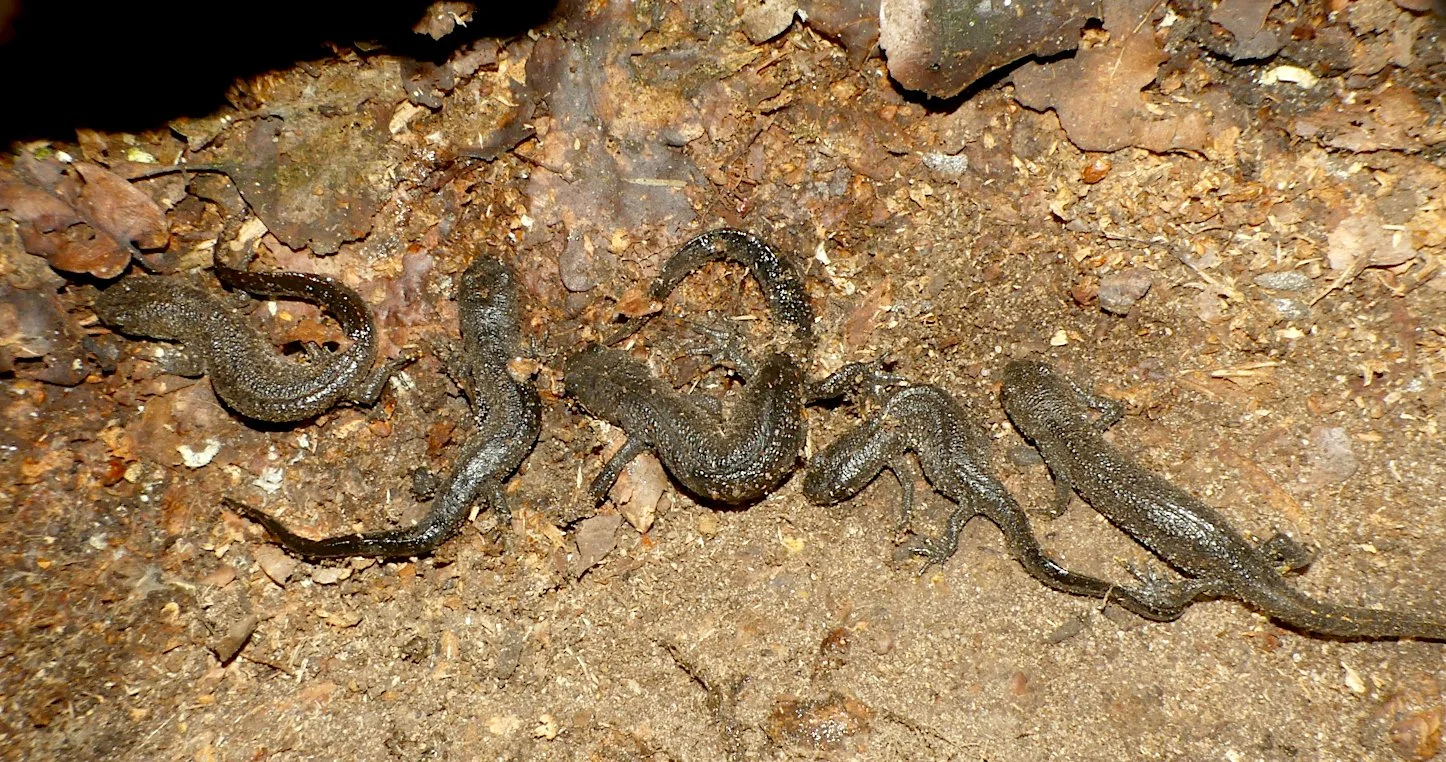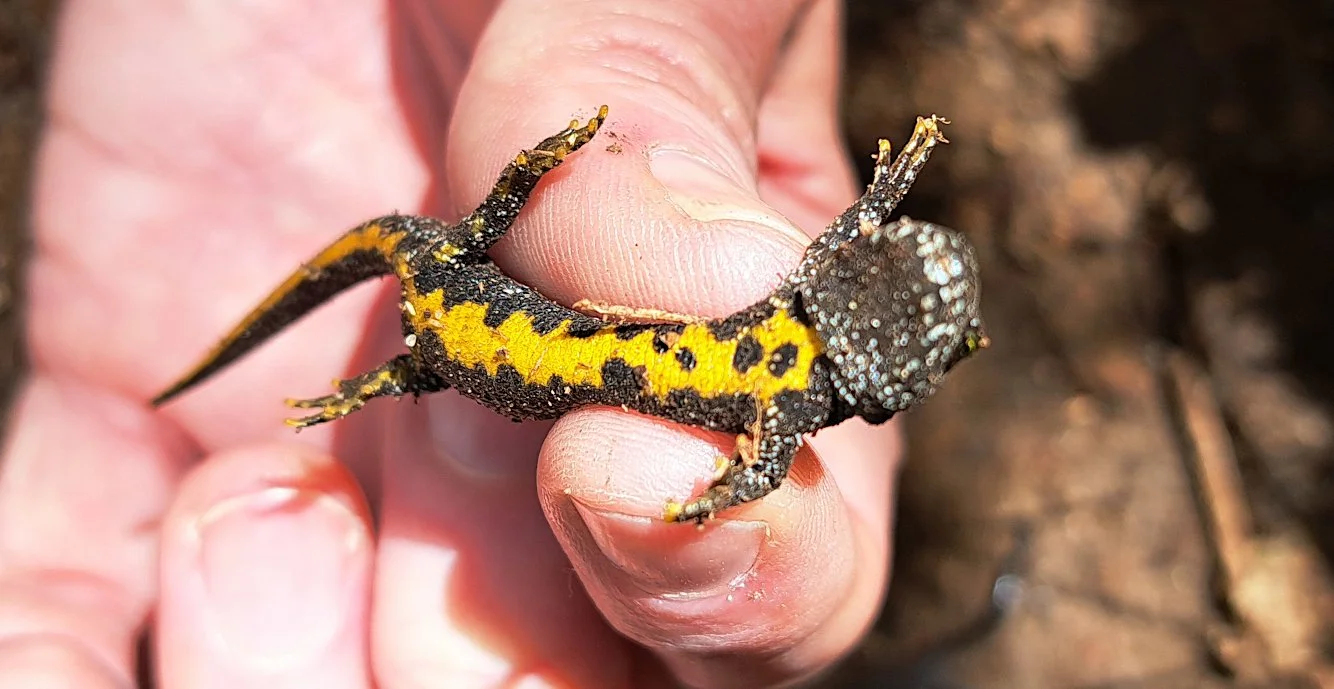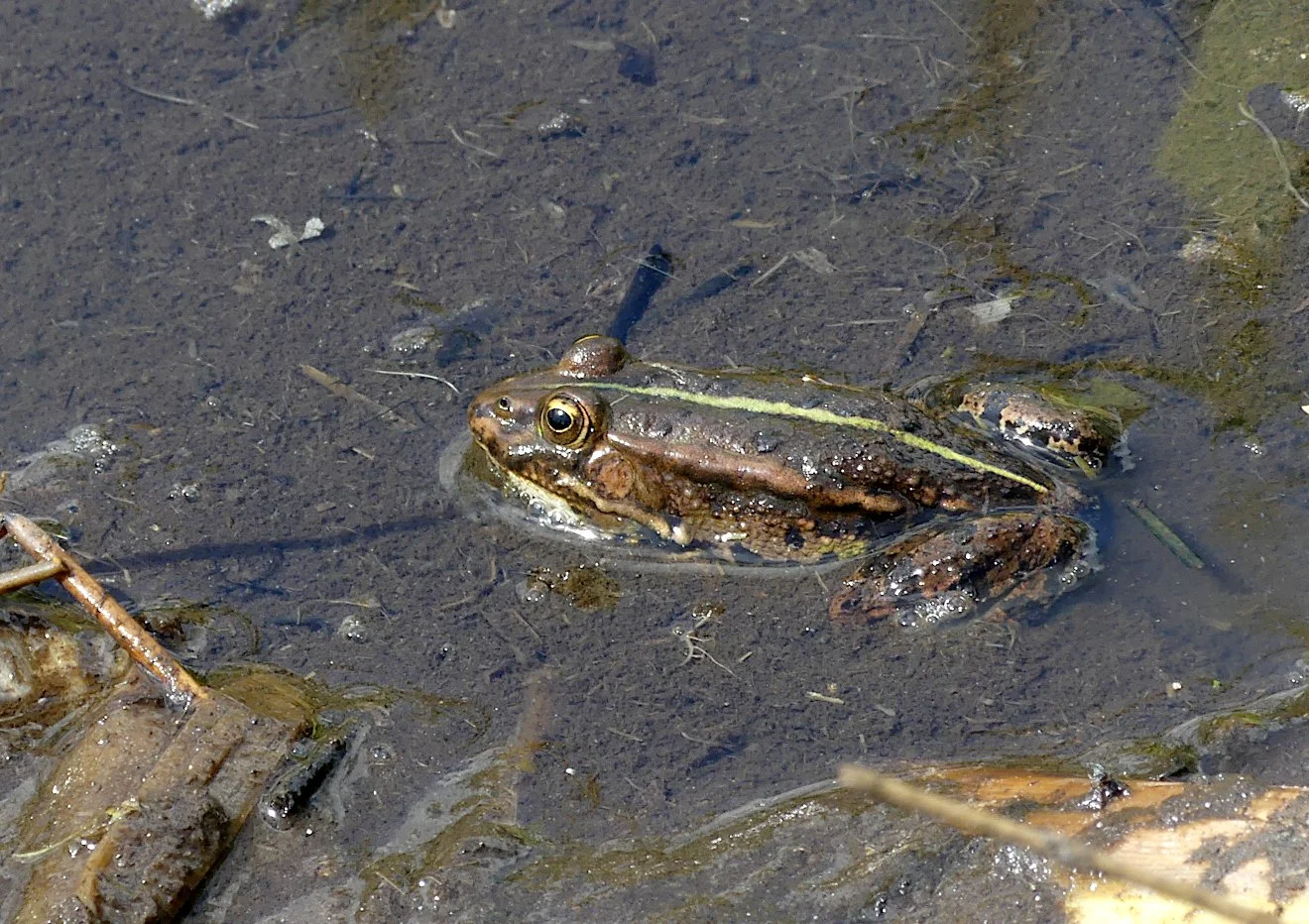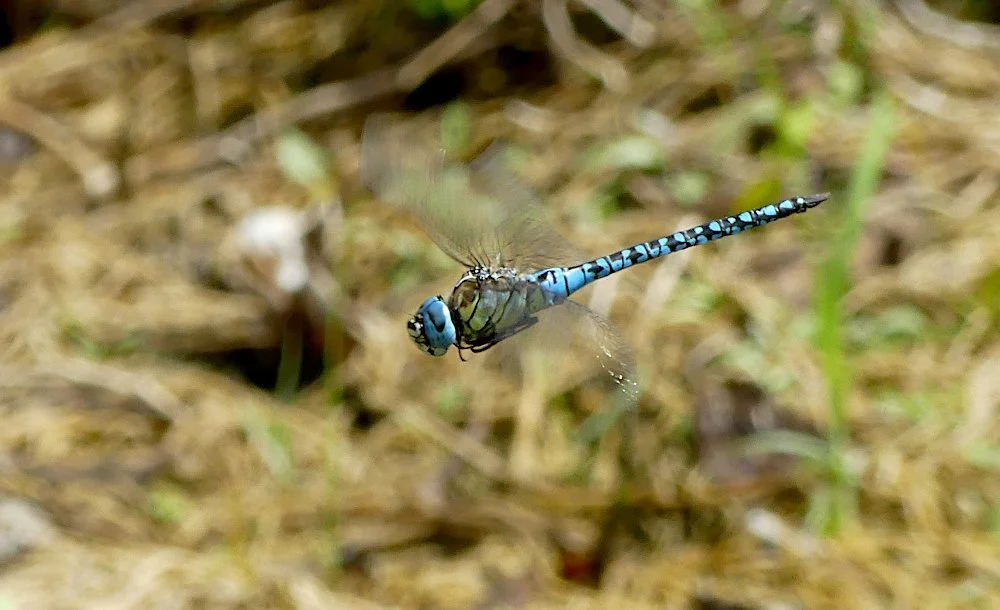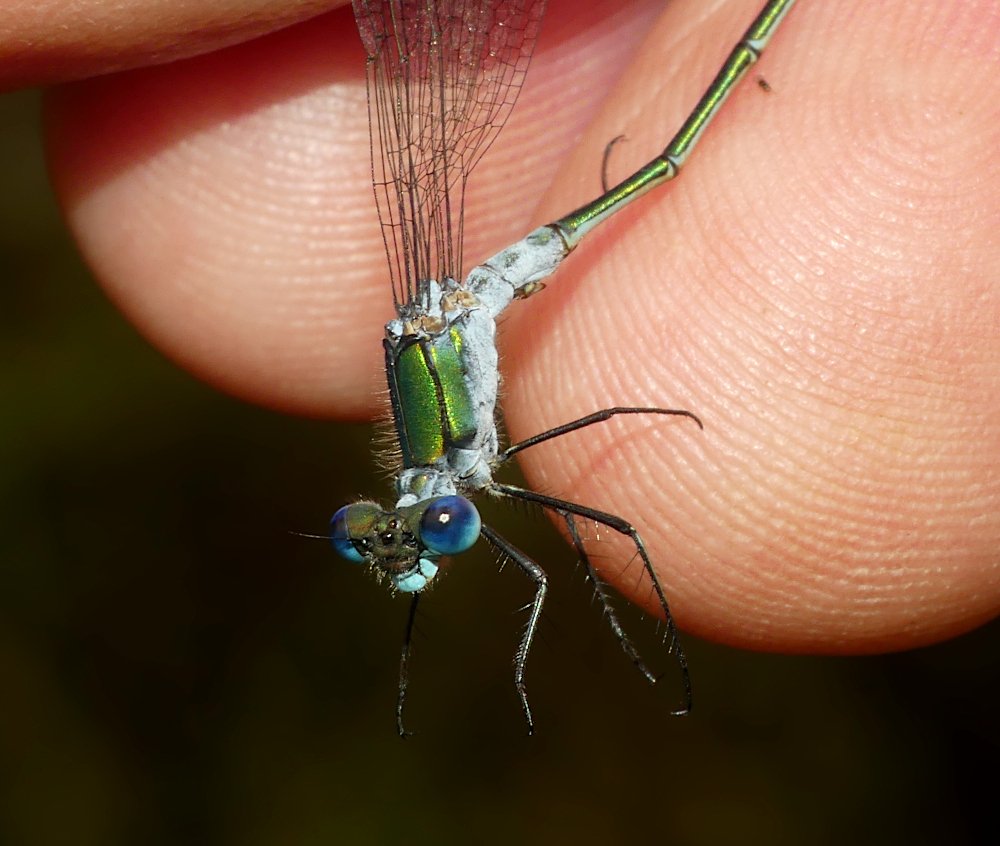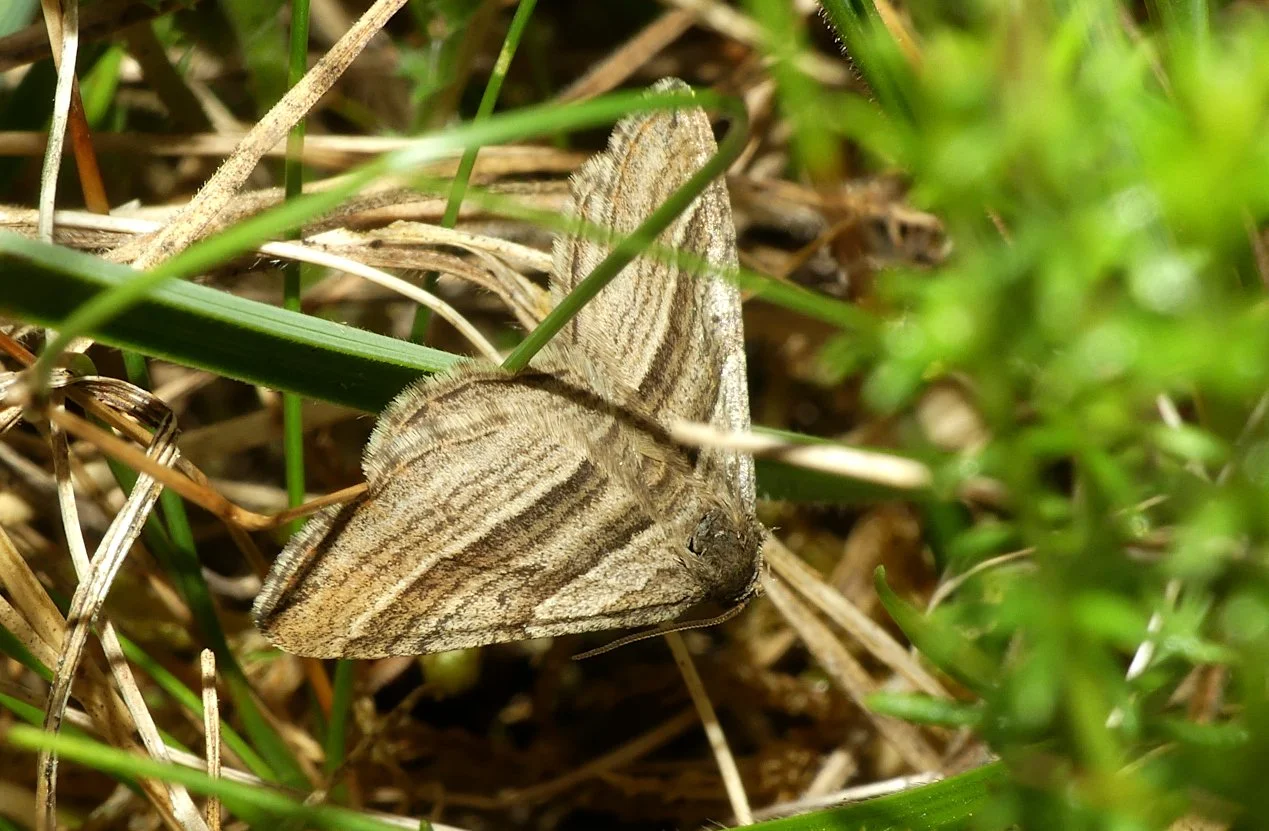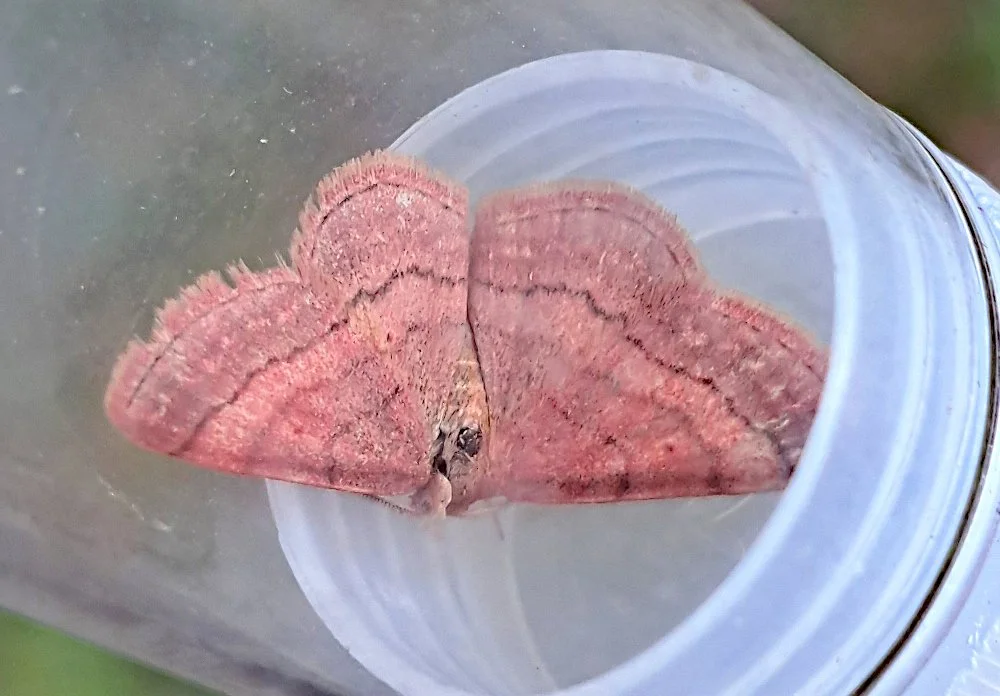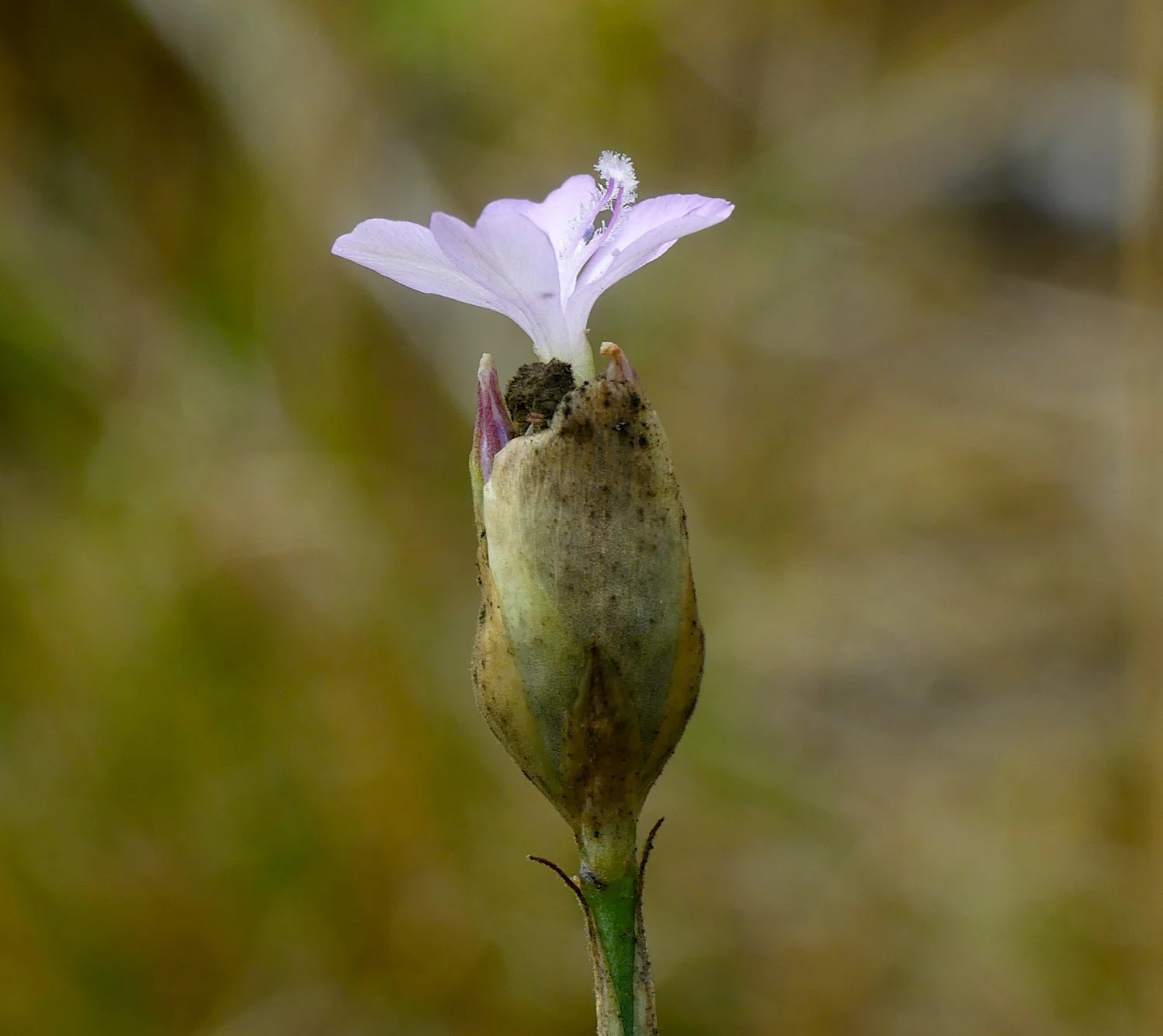July 2025 - trip to UK (day 7)
/The trip finished with a full day in the New Forest, to search for rare species. I had been looking forward to this for a while and intended to give it some real effort today. I didn’t get off too early as I wanted the sun to be up, so the insects were out and about. I was lucky with the weather because, unlike the dreary day yesterday, today was fine and mostly sunny. I had plenty of gen from Andy who had visited a few times recently and I targeted three main sites today. The first location was Crockford Stream which is one of the best places in the whole country for dragonflies and damselflies, and I had three target species I wanted to tick off.
I could not park right next to the stream as the nearby car parks were closed, so I stopped about a mile away and hiked across the dry heathland without stopping. The only thing I noticed was a Red Kite overhead and was surprised by the lack of butterflies. After a mile I went off-piste and across the heather searching for the headwaters of the stream. Dropping down into a hollow I soon came across a superb wet bog, totally isolated from all roads and paths. It was a superb spot, and I could not see a soul in any direction, nor any evidence of civilisation. I felt totally isolated from all humans and it was great!
Bog above Crockford Stream, New Forest, 30 Jul 25
As soon as I reached the boggy area, there were Keeled Skimmers all over the place, a species I had never seen before. The powder-blue males were chasing and fighting each other. I didn’t see many of the brown females but I suppose they were just resting, watching the males. The skimmers pushed their wings forward when perched making them very distinctive.
Keeled Skimmer - Crockford Stream, New Forest, 30 Jul 25 - male
Keeled Skimmer - Crockford Stream, New Forest, 30 Jul 25 - female
One of the main plants here was Bog Myrtle, and Andy told me that there was a pretty rare weevil that lives on it that he’d found in this area. I swept the net at a couple of bushes and, straight away, caught two of them - Orchestes jota. It is a plain blackish weevil with a bright white spot on the back, and it only lives at a few sites in the UK, especially in the New Forest and in nearby Dorset. Unfortunately, I did not take a photo! Although there were lots of Keeled Skimmers up here there were not many other dragonflies, so I carried on to where the bog turned into a small, beautiful, open pool. There were a few more common damselflies and a few Emperors flying around but no new species, although I startled a Snipe from the floor.
Pool above Crockford Stream, New Forest, 30 Jul 25 - with free-roaming cattle in the background
Pool above Crockford Stream, New Forest, 30 Jul 25
Bog Pondweed - Crockford Stream, New Forest, 30 Jul 25
Following the water further down, the bog turned more into a proper, shallow stream with loads of tiny fish flitting about. A couple more species of damselfly appeared around this area including a Small Red Damselfly, which I had only seen once before, a species which is confined to heathland bogs. I am sure that there were all sorts of small, rare insects in this area, but I was focusing on odonata this morning.
Crockford Stream, New Forest, 30 Jul 25
Small red Damselfly - Crockford Stream, New Forest, 30 Jul 25
Crockford Stream, New Forest, 30 Jul 25 - this was the only bridge to cross the stream.
Right down at the bottom, along the section nearest the road, was the area which seemed easily the best for dragonflies and I walked up and down this a few times. Amongst the more common species I was really pleased to see many Beautiful Demoiselles, a species that we don’t get in Guernsey and one of my favourite insects.
Beautiful Demoiselle - Crockford Stream, New Forest, 30 Jul 25
Beautiful Demoiselles - Crockford Stream, New Forest, 30 Jul 25
Finally, after looking at hundreds of damselflies, I finally found my number one quarry - a Southern Damselfly. The New Forest is one of the few places that the species lives in the UK. Very similar to the other blue and black damsels, but this one has a mercury mark on its first segment - it’s meant to look like the astrological symbol for mercury. Unfortunately, I never found my third dragonfly target, the Golden-ringed Dragonfly, but at least I have a reason to go back.
Southern Damselfly - Crockford Stream, New Forest, 30 Jul 25
Lesser Water-plantain - Crockford Stream, New Forest, 30 Jul 25
Crockford Stream, New Forest, 30 Jul 25
My second port of call was Hatchet Pond, a larger lake with lots of marshy edges. I didn’t really have any specific targets here, I was just going to see what I could find.
Hatchet Pond, New Forest, 30 Jul 25
Donkey - Hatchet Pond, New Forest, 30 Jul 25
The first area I tried was a cut-off, dried up pond just south of the road, which turned out to be terrific. It wasn’t quite dry but there was lots of marshy vegetation that you could actually walk through without sinking. One of the first things I flushed was bright green cricket-type creature. I didn’t recognise it and so I managed to net it and realised that it was actually a Large Conehead, which was not on my radar at all. This has only recently colonised the UK in the last few years. It is spreading rapidly along the south coast but I don’t know how many have been seen in the New Forest before.
Large Conehead - Hatchet Pond, New Forest, 30 Jul 25
As I had the net out, I started catching a few moths that I was putting up from the ground. They were mostly ‘grass-moths’, Agriphila and the like, but I also caught a superb Pyrausta purpuralis. And then I caught an even better ‘pyralid’ when I netted a Diamsemiopsis ramburialis (Migrant Sable) a new species for me. This is a southern moth that you look out for in your trap during periods of migrant activity - not what you expect to find whilst netting in the daytime inland with no southerly winds at all. It does not apparently breed in the UK at all but, as a wetland species, if it did, the New Forest ponds would be the perfect habitat for it to do so. So perhaps it is starting to colonise the UK in this area - who knows?
Diamsemiopsis ramburialis - Hatchet Pond, New Forest, 30 Jul 25
Hampshire-purslane - Hatchet Pond, New Forest, 30 Jul 25 - A rare plant rstricted to the New Forest - some kind of aquatic willowherb - doesn’t look much!
I then went up to the head of the pond where the streams enter the lake. There was lots of bog habitat round here and I went exploring. I noticed a guy wandering in amongst the bog and, due to his tell-tale slow progress, I presumed he was a naturalist. “What you looking for?” I called over to him. He was a botanist and was searching for Bog Orchid, a species he had seen here quite a few years ago and was trying to find it again. I wandered around for a bit, seeing lots more Keeled Skimmers and a few Black-tailed. I also sweep netted a Broom Moth larva amongst the stream-side vegetation.
I then looked round and saw the botanist guy lying down in the bog! He had either had some kind of medical emergency, or had found his quarry. Either way, I had to go investigate and walked up behind him. I said, “I guess you’ve found it then?” and he literally jumped out of his skin. He was photographing a tiny, green Bog Orchid growing at the base of a small shrub, just a few inches high. Compared to most orchids, this was so hard to see amongst the marshy vegetation. I tend to avoid other people when I’m out in the field, but it shows its worth being nosy sometimes.
Bog Orchid - Hatchet Pond, New Forest, 30 Jul 25
Bog Orchid - Hatchet Pond, New Forest, 30 Jul 25
Exotic Water-lily sp. - Hatchet Pond, New Forest, 30 Jul 25
Exotic Water-lily sp. - Hatchet Pond, New Forest, 30 Jul 25
It was getting to late afternoon by the time I got to Beaulieu Heath, my final planned walk of the day, and I was pretty tired. I had to keep going though because I was after a new butterfly - Silver-studded Blue. Andy had been to the New Forest just a few weeks ago and told me that they were abundant on the dry heaths, but I had not even had a sniff yet. I headed straight out across the heather but there were no butterflies at all flying about. It wasn’t quite as sunny now and there was a bit of a breeze. Finally, I managed to net a single female Silver-studded Blue, unsatisfactory but welcome.
Beaulieu Heath looking back from Denny Wood, New Forest, 30 Jul 25
female Silver-studded Blue - Beaulieu Heath, New Forest, 30 Jul 25
Wasp Spider - Beaulieu Heath, New Forest, 30 Jul 25
There were plenty of Hymenoptera flying low across the sandy heath. Much the commonest was the Heather Mining Bee (Andrena fuscipes), of which there were literally thousands. On the sandy paths there were numerous species of wasps, including the long-bodied Ammophila sabulosa, and a new species of nomad bee for me, the Black-horned Nomad Bee (Nomada rufipes). A single male Dartford Warbler appeared briefly amongst the vegetation.
Across the heath I reached the one of the best ancient woodlands in the area, Denny Wood. There were not very many insects flying about but I did enjoy some woodland species which I rarely see. A couple of Nuthatches fed around an old decaying tree and I saw a Green Woodpecker. There were numerous roaming flocks of tits and warblers and I managed to get a good look at a Marsh Tit, something I have not seen for a while. Spotted Flycatchers were relatively common with quite a few noted along the paths.
Denny Wood, New Forest, 30 Jul 25
Spotted flycatcher and Nuthatch - Denny Wood, New Forest, 30 Jul 25
It was so peaceful and quiet in the wood, it was a great way to spend the final part of my trip. I trudged back to the car and headed back to the hotel pretty well knackered. In total I had seen 166 new species during this week away, many more than I had expected, so a fabulous success..































